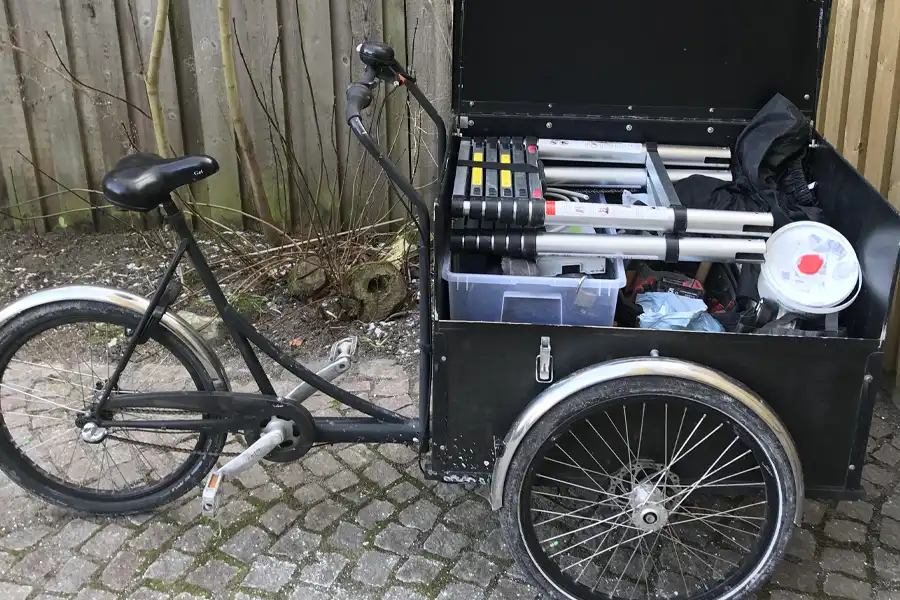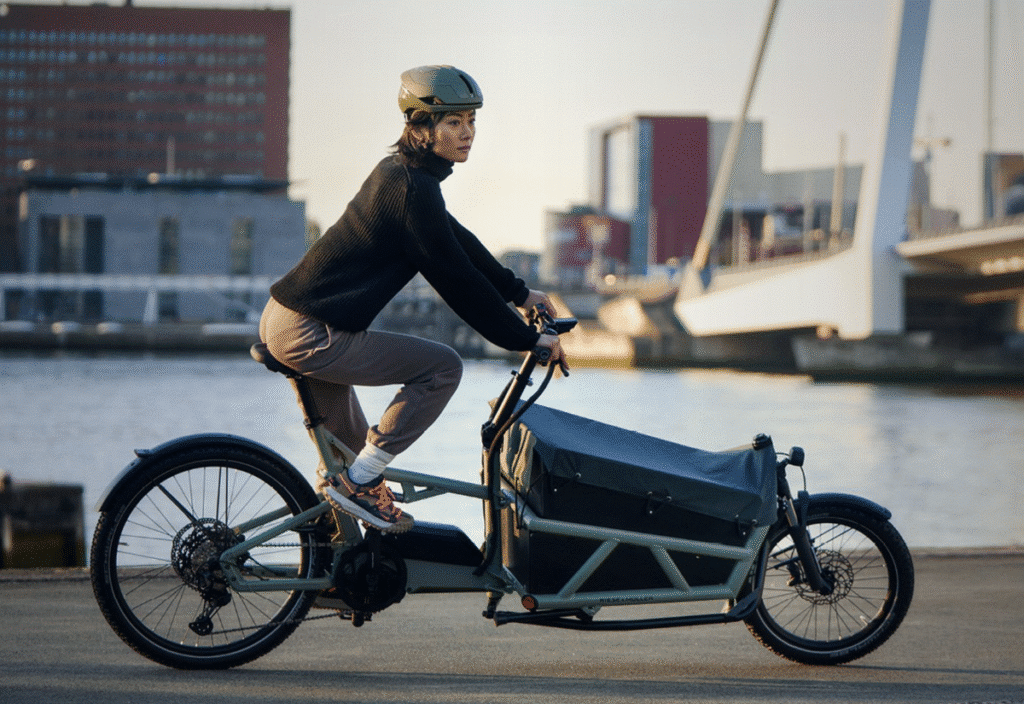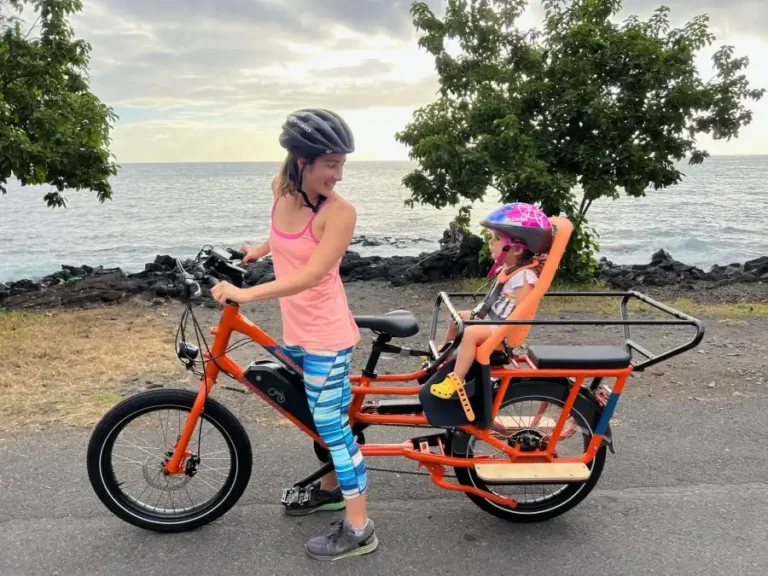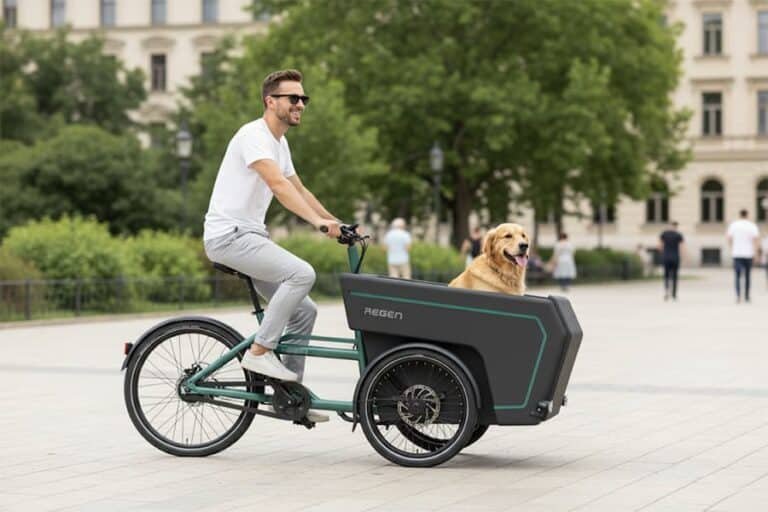Sissejuhatus: Miks kaubarattad on praegu õige äri
Kui te olete viimasel ajal Euroopa linnade tänavatel tähelepanu pööranud, olete ilmselt märganud uut trendi: kaubarattad on kõikjal. Koolitransporti tegevatest lapsevanematest kuni toidukaupu vedavate kulleriteni - kunagi niššis olnud kaubarattad on muutunud peavooluks.
Omavalitsused ja riiklikud valitsused kogu Euroopas pakuvad heldelt toetusi, jalgratta infrastruktuur paraneb ja tarbijad on avatumad kui kunagi varem lühikeste autosõitude asendamiseks jalgrattaga. Ettevõtjate, liikuvuspoodide ja jalgrattasõidu entusiastide jaoks on praegu parim hetk siseneda kaubarattaturule.
Kuid enne alustamist tuleb vastata ühele suurele küsimusele: Kas sa hakkad mõne väljakujunenud kaubamärgi volitatud edasimüüjaks või hangid otse OEM/ODM-tehaselt ja ehitad oma kaubamärgi?
Selles juhendis tutvustatakse teile mõlemat võimalust, näidatakse teile, kuidas saada samm-sammult edasimüüjaks Euroopas, loetletakse juhtivaid kaubarattamarke koos nende taotluslehtedega ning tuuakse välja peamised ressursid, mida vajate nõuetekohase ja kasumliku ettevõtte juhtimiseks.
Edasimüüja vs. OEM/ODM: kaks peamist teed turule sisenemiseks
Enne kui me jõuame edasimüügiprotsessi, võrdleme kahte kõige tavalisemat sisenemisstrateegiat.
1. Välja kujunenud brändi edasimüüjaks saamine
Kuidas see toimib: Sa taotled oma piirkonnas olemasoleva kaubarattamargi esindamist. Te müüte nende tooteid, järgite nende kaubamärgistandardeid ja saate kasu nende mainest.
Plussid:
- Brändi tunnustamine - Kliendid usaldavad väljakujunenud nimesid, mis lühendab müügitsüklit.
- Turundustoetus - Professionaalsed tootefotod, kataloogid ja reklaamimallid.
- Koolitus ja tehniline tugi - Juurdepääs ajamite diagnostikale, garantii töövoogudele ja remondijuhistele.
- Tõestatud tootekvaliteet - Jalgrattad on sertifitseeritud, testitud ja vastavad juba ELi nõuetele.
Miinused:
- Madalamad marginaalid kui ise importida ja kaubamärgistada.
- Brändi piirangud - Te peate järgima nende hinnakujunduse, territooriumi ja kaubandusega seotud eeskirju.
- Vähem paindlikkust - Toote spetsifikatsioonid, värvid ja funktsioonid määrab kaubamärk.
- Kohustus varude säilitamiseks - Teil võib olla vaja tellida miinimumkoguseid või hoida teatud mudeleid müügil.
2. Tootja OEM või ODM koos tootjaga
Kuidas see toimib: Te teete koostööd otse tehasega (sageli Aasias või Ida-Euroopas), et toota kaubarattaid oma kaubamärgi all (ODM = disainitakse nende poolt teie kaubamärgiga; OEM = teie disainite selle, nemad toodavad selle).
Plussid:
- Kõrgemad marginaalid - Ei mingit kaubamärgi vahendajat.
- Täielik kontroll kaubamärgi üle - Teie logo, teie värvid, teie omadused.
- Spetsifikaadi kohandamine - Kohandage komponendid vastavalt oma turu vajadustele.
Miinused:
- Kaubamärgi tuntus puudub käivitamisel - Klientide usaldus algab nullist.
- Vastavuskoormus - Te olete ELis seaduslikult tootja, kes vastutab CE-märgistuse, tehniliste dokumentide, testimise ja mitmekeelsete kasutusjuhendite eest.
- Eelinvesteeringud - Valuvormid, teadus- ja arendustegevus, prototüübid ja suured miinimumkogused.
- Müügijärgsed väljakutsed - Te peate ise tegelema garantiiosadega, koolitusega ja kogu klienditoega.
Millise peaksite valima?
Kui olete kaubarattaäris uus või soovite keskenduda pigem müügile ja teenindusele kui tootearendusele, on edasimüüjaks saamine tavaliselt ohutum ja kiirem tee. Kui teil on tugev kapital, tööstuskontaktid ja ettevõttesisesed tehnilised teadmised, võib OEM/ODM pakkuda suuremat pikaajalist tulu ja kasumimarginaali.

Kuidas saada Cargo Bike edasimüüjaks Euroopas (samm-sammult)
1. samm - valige oma turu fookus
- Jaemüük (B2C) - Pered, pendelrändurid, elustiili ostjad.
- B2B/laevastik - Logistikafirmad, restoranid, riigihankelepingud.
- Hübriid - Perekondlike ja äriklientide segu.
Kaardistage oma sihtpiirkond, vaadates rahvastikutihedust, jalgratta infrastruktuuri ja kohalikud toetused. Sellistes riikides nagu Saksamaa, Prantsusmaa, Austria, Belgia ja Madalmaad on kümneid munitsipaal- ja piirkondlikke kaubaratta toetusprogramme - see võib teie müügiedu muuta või katkestada.
2. samm - saada oma õiguslik ja maksualane alus õigeks
- EORI number - Nõutav jalgrataste või nende osade importimisel ELi.
- Käibemaksu registreerimine - Piiriülese müügi puhul kaaluge Ühtne kontaktpunkt (OSS) süsteem käibemaksudeklaratsioonide lihtsustamiseks.
- Ärikindlustus - Lisage tootevastutuskate; edasimüüjana võib teid ikka veel kahjunõuetesse tõmmata.
- Levitaja kohustused - ELis on "turustaja" juriidiline roll. Te peate tagama, et jalgrattad on CE-märgistatud, vastavad nõuetele ja varustatud kohaliku keele kasutusjuhenditega.
3. samm - toote vastavuse kontrollimine
Küsige brändi kohta:
- ELi vastavusdeklaratsioon (DoC)
- Rakendatud standardite loetelu - EN 15194 on peamine standard e-rataste jaoks.
- Aku UN 38.3 Katse kokkuvõte - Vajalik transpordiks ja garantiiks.
- Mitmekeelsed kasutusjuhendid - Iga riigi kohta, kus te müüte.
Samm 4 - Seadke sisse teenusekeskne töötuba
Kaubarattad on tarbesõidukid - seisak on teie klientide jaoks kallis.
Investeeri:
- Ajami süsteemi diagnostika - Bosch, Shimano STEPS, Bafang jne.
- Sertifitseeritud tehniline koolitus - Bosch eBike Systems MBPS, Shimano teeninduskeskuse kursused.
- Laenurattad - Hoidke kliendid remondi ajal liikuvana.
- Aku ohutusprotokollid - Tuleohutu ladustamine, laadimise SOP.
Samm 5 - Planeeri inventar ja kaubastamine
- Hoidke demorattad mitmes formaadis (longtail, long-john, box trike).
- Varud kulumisosad ja populaarsed tarvikud.
- Loo proovisõidu marsruut ja korraldada avatud demoüritusi.
6. samm - kandideerimine kaubamärkidele
Enamik kaubamärke nõuab:
- Ettevõtte andmed - Ettevõtte registreerimine, käibemaks, kaupluse fotod.
- Turuplaan - Teie kliendikesksus, müügiprognoos ja müügiedendusideed.
- Teenuse maht - Tõendid koolitatud mehaanikute ja töökojarajatiste olemasolu kohta.
Samm 7 - Läbirääkimised edasimüüja tingimuste üle
Põhipunktid:
- Territoorium ja online-müügiõigused.
- Minimaalne avatav tellimus ja varude taastamise nõuded.
- Garantiiprotsess ja varuosade tarnimine.
- Koolituse ajakava ja kulud.

Juhtivad kaubarattamargid ja edasimüüja taotluse lingid
Siin on lai nimekiri Euroopas tegutsevatest tuntud kaubarattamarkidest. Klõpsake igaühele, et külastada nende edasimüüja taotlust või kontaktlehte.
- Linna nool
- Riese ja Müller
- Larry vs Harry / Bullitt
- Yuba Europe
- Babboe
- Triobike
- Lihunikud ja jalgrattad
- Tern jalgrattad
- Bakfiets.nl
- Douze Cycles
- Carqon
- Velove Armadillo
- Christiania jalgrattad
- Winther Bikes
- Lovens Cargo
Kasulikud allikad Cargo Bike Business alustamiseks
- ELi EORI-numbri teave
- ELi käibemaksuga seotud OSS-portaal
- ELi sinine juhend (toote nõuetele vastavuse rollid)
- EN 15194 Standardi ülevaade
- UN 38.3 Liitiumaku testimise nõuded
- Bosch eBike Systems edasimüüja portaal
- Shimano teeninduskeskuse programm
- Euroopa Cargo Bike ostu soodustuste nimekiri
Kokkuvõte: Valige mudel, mis sobib teie tugevustega
Kui soovite kiiret turulejõudmist, valmis mainet ja tehases tagatud teenindussüsteeme, siis on brändi edasimüüjaks saamist raske võita. See võimaldab teil keskenduda müük, teenindusja kliendisuhete loomine ilma, et peaksite ise toodet projekteerima.
Kui teil on sügavamad taskud, tarneahela kogemus ja soov täielikult kontrollida oma kaubamärgi identiteeti ja tootesarja, võib OEM/ODM-teenus tasub end ära suurema kasumimarginaali ja strateegilise sõltumatuse näol - kuid te kannate kogu koormust seoses nõuetele vastavuse, kvaliteedikontrolli ja müügijärgse teenindusega.
Nii või teisiti on Euroopa kaubarattaturg 2025. aastal kasvupotentsiaaliga ruum. Valige oma marsruut, ehitage oma meeskond ja hakake rohkem kaubarattaid - teie nimega - teele panema.







